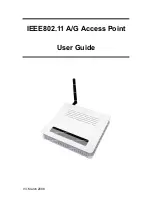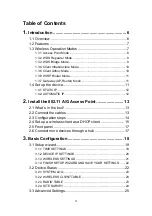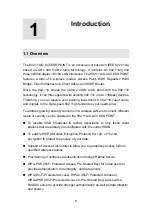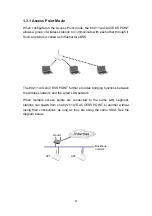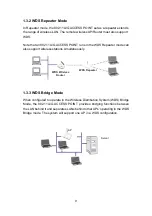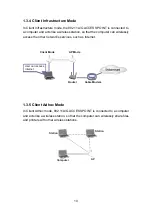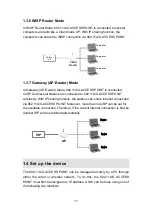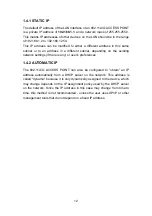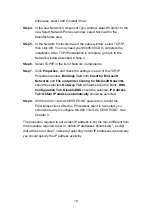
7
1.2 Features
Compliant with 802.11a, 802.11b and 802.11g, Super A™ and Super G™
standards with roaming capability.
Supports 6 wireless multi-function modes: Access Point, WDS Repeater,
WDS Bridge, Client Infrastructure, Client Adhoc and WISP Router.
Static assignment or DHCP client to set the device IP address.
Multiple security measures: SSID hiding, Access Control List, WEP based
encryption (64, 128, 152 bits), enhanced Security with 802.1x using a
primary and a backup Radius Server with/without dynamic WEP keys,
WPA, WPA-PSK, WPA2, WPA2-PSK, WPA-AUTO and WPAPSK-AUTO.
Extensive monitoring capability such as event logging, traffic/error statistics
monitoring. Support of remote logging.
Easy configuration and monitoring through the use of a Web-browser
based GUI, SNMP commands from a remote SNMP management station,
and UPnP for users to automatically discover the device.
Setup Wizard for easy configuration/installation.
Configuration file download and restore.
Firmware upgradeable.
1.3 Wireless Operation Modes
A group of wireless stations communicating with each other is called a Basic
Service Set (BSS) and is identified by a unique SSID.
When an 802.11A/G ACCESS POINT is used, it can be configured to operate
in the following network configurations.

